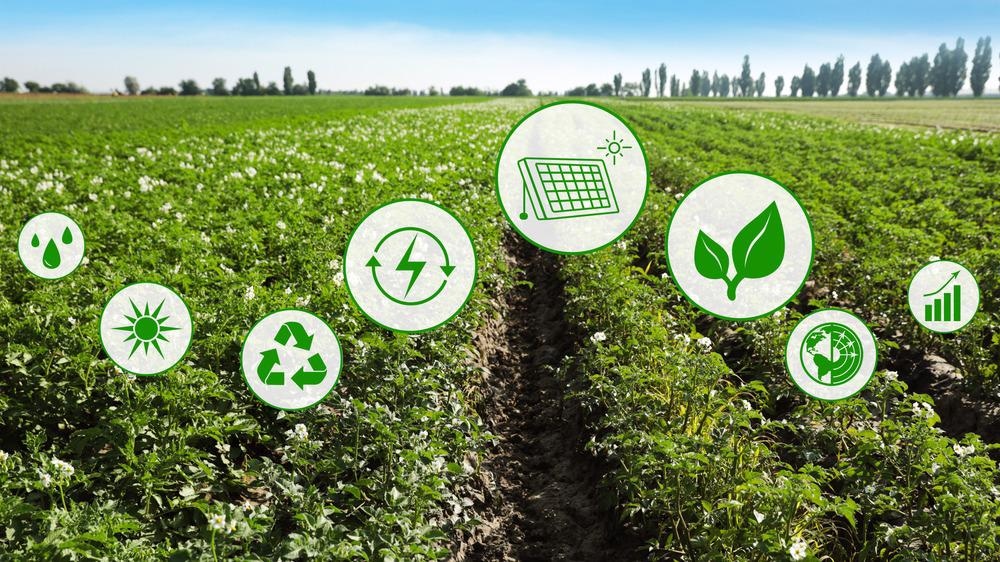Magnetic nanomaterials are nanomaterials that can be controlled by magnetic fields. This article discusses the applications of magnetic nanomaterials in the agritech sector.

Image Credit: New Africa/Shutterstock.com
Magnetic Nanomaterials: Overview and Applications
Magnetic nanoparticles are made up of magnetic elements, including iron, nickel, cobalt, chromium, manganese, and gadolinium, as well as their chemical compounds.
Over the last decade, there has been a significant amount of research on the synthesis, characterization, and post-synthesis modification of several magnetic nanomaterials, leading to several developing applications in a broad range of sectors.
The flexibility and usefulness of magnetic nanoparticles result from their rapid and simple separation, which eliminates laborious and expensive separation techniques. Biochemical engineering, stem-cell targeting, microelectronics, magnetic resonance imaging, magnetic nanoparticle imaging, data management, environmental cleanup, and agricultural technologies have found promising applications for magnetic nanoparticles in recent times.
Role Of Nanotechnology in the Agritech Sector
In the last decade, nanotechnology in agricultural production has acquired a significant pace due to the availability of public financing. Nanotechnology offers novel agrochemical chemicals and delivery systems to increase agricultural yield, and it promises to minimize pesticide use.
Precision farming methods might be utilized to increase agricultural production without harming the land or water. Additionally, nanotechnology may decrease nitrogen loss caused by leaching and emissions. However, the potential advantages of nanomaterials for agriculture, food, and fisheries must be weighed against risks to the land, water, ecology, and health of communities.
Nanomaterials: A Viable Solution for Agricultural Issues
Rapid climate changes, a decline in soil quality, macro-and micronutrient insufficiency, excessive use of nitrogen fertilizer, and the accumulation of heavy metals in the soil are some of the huge issues the agricultural industry faces. Nanotechnology may significantly help sustainable farming by increasing crop yield and strengthening soil quality.
Nanoparticles carrying herbicides, drugs, or nutrients may act as "magic bullets" that target specific plant sections and discharge their contents. These chemicals may facilitate the efficient absorption of herbicides through the epidermis and tissues, allowing for a gradual and steady release of the active ingredients.
Through smart agriculture, nanotechnology and nano-based smart delivery mechanisms can also aid in using water, fertilizers, and herbicides effectively. Using nanomaterials, global positioning devices, and satellite imaging of farms, agricultural managers can remotely identify agricultural pests or signs of stress, such as drought.
Significance of Magnetic Nanomaterials in Agriculture
Magnetic nanoparticles (MNPs) are reasonably affordable and ecologically beneficial. As a result, they have been used in agriculture as antibacterial agents, nanoelectronics, and for the detection and elimination of toxins.
Although mass spectrometry and high-performance column chromatography are often employed to identify pesticide residues in food, they are not suited for usage in situ. This may be circumvented by utilizing an immunoassay based on MNPs.
Yu and Yang, for instance, developed a magnetic nanoparticle (MNP)-based screening approach capable of detecting pyrethroid residues in crops. This was accomplished by incorporating MNPs into a vegetable pulp, after which the MNPs served as tiny magnets, attracting pyrethroid particles. The pyrethroid-bound MNPs were simply washed away with a small quantity of organic liquid.
Additionally, magnetic nanoparticles can be used to assess the quality of food products. Cornell University scientists used the notion of supermarket barcodes for inexpensive, efficient, quick, and simple decoding and pathogen identification. Using nanomaterials based on iron oxide, they created nano barcodes that could label numerous diseases on a farm and be readily recognized using any fluorescent-based instrument.
Researchers at Iowa State University recently used 3-nm mesoporous silica nanoparticles (MSN) to transfer DNA and drugs into segregated plant cells. MSNs are artificially coated and function as delivery vehicles for genes to plants.
The coating prompts the plant to absorb the nanoparticles through the cell membranes, where the genes are introduced and triggered in a precise and regulated way, with no harmful side effects. This method has been used to successfully deliver DNA into tobacco and maize plants.
Future Outlook on Use of Magnetic Nanomaterials in the Agritech Sector
The use of magnetic nanoparticles can greatly help solve many problems caused by expanding population, plant and animal illnesses, and global warming.
Because of their specific physicochemical and magnetic characteristics, magnetic nanoparticles have a potential future in agriculture. As magnetic nanomaterial manufacturing processes are simplified via research, they will become simpler and less expensive, demonstrating increased potential in the agricultural sector, particularly for large-scale applications.
The deployment of magnetic nanoparticles in actual field investigations should be the focus of future research. Additional research employing cutting-edge technology platforms is required to fully understand the relationship between nanomaterials, plants, and soil. Furthermore, the environmental usability, bioavailability, and toxicity of magnetic nanoparticles should be carefully investigated before their large-scale use in the agricultural sector.
References and Further Reading
Ghidan, A. Y., & Antary, T. M. (2019). Applications of Nanotechnology in Agriculture. IntechOpen. Available at: https://doi.org/10.5772/intechopen.88390
ISAAA. (2022). Nanotechnology in Agriculture. From International Service for the Acquisition of Agri-biotech Applications (ISAAA): https://www.isaaa.org/resources/publications/pocketk/39/default.asp
Saima, G., Bahadar, K. S., Ur, R. I., Ali, K. M., & I, K. M. (2019). A Comprehensive Review of Magnetic Nanomaterials Modern Day Theranostics. Frontiers in Materials. Available at: https://doi.org/10.3389/fmats.2019.00179
Wee, J. L., Law, M. C., Chan, Y. S., Choy, S. Y., & Tiong, A. N. (2022). The Potential of Fe-Based Magnetic Nanomaterials for the Agriculture Sector. ChemistrySelect. Available at: https://doi.org/10.1002/slct.202104603
Yu, X., & Yang, H. (2017). Pyrethroid residue determination in organic and conventional vegetables using liquid-solid extraction coupled with magnetic solid-phase extraction based on polystyrene-coated magnetic nanoparticles. Food Chemistry. Available at: https://doi.org/10.1016/j.foodchem.2016.08.115
Disclaimer: The views expressed here are those of the author expressed in their private capacity and do not necessarily represent the views of AZoM.com Limited T/A AZoNetwork the owner and operator of this website. This disclaimer forms part of the Terms and conditions of use of this website.